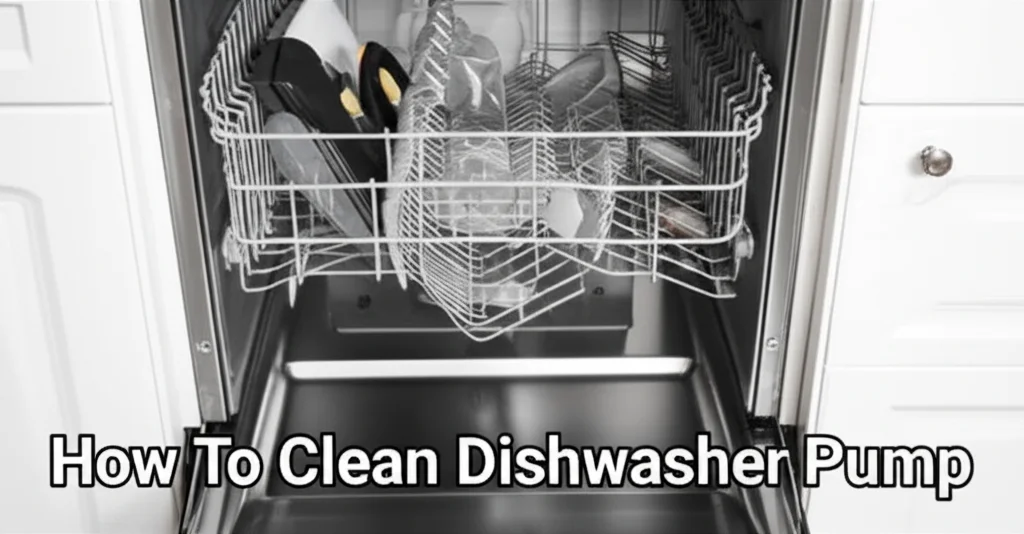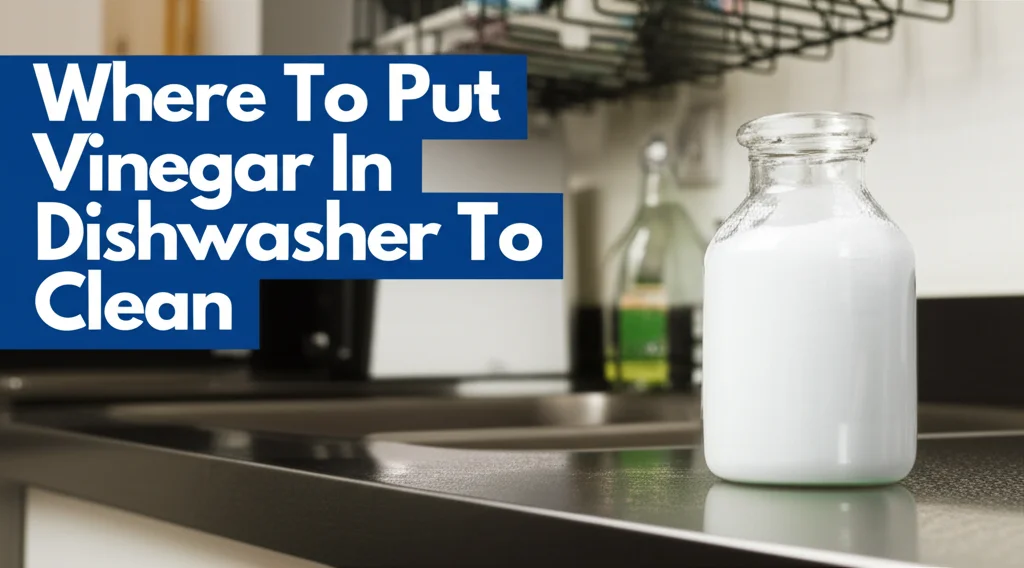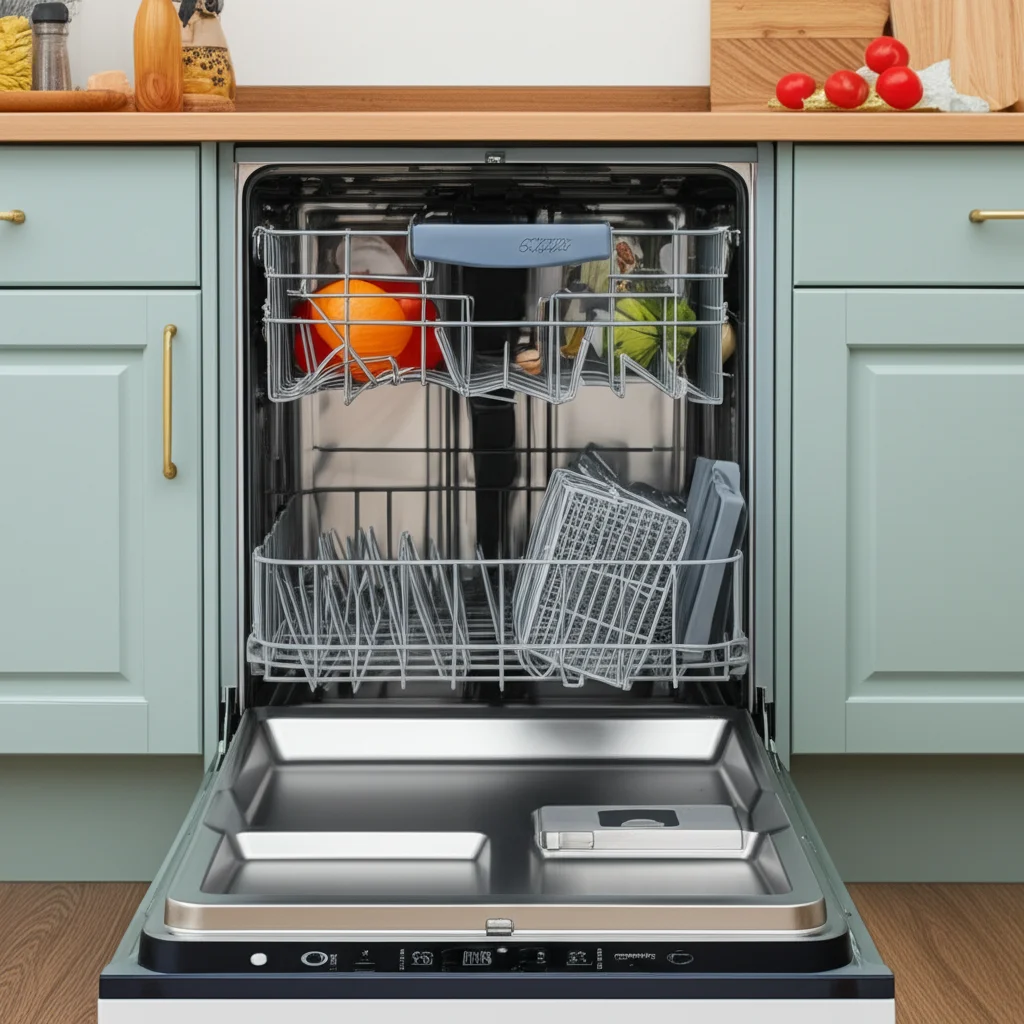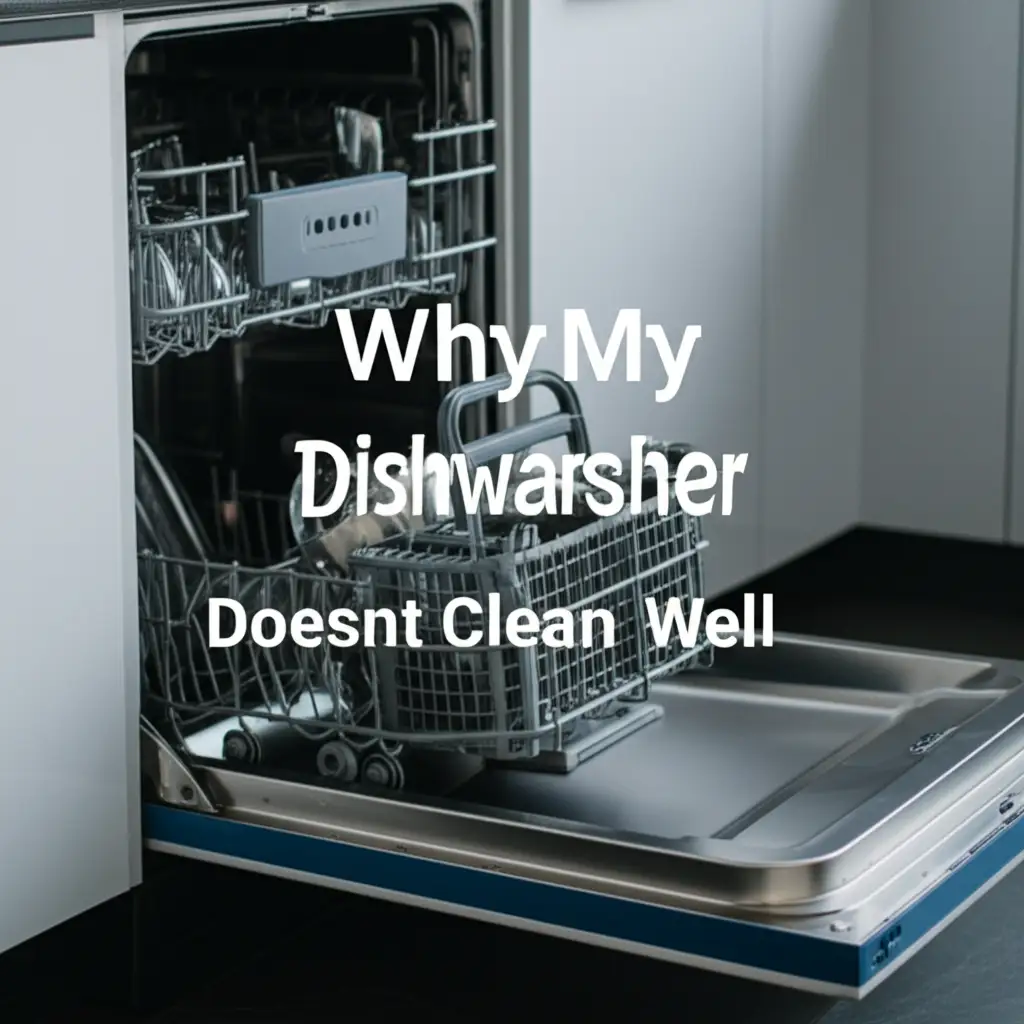· Todd Martin · Appliance Maintenance · 13 min read
How To Clean Dishwasher Pump

Clean Your Dishwasher Pump: A Comprehensive Guide
Has your dishwasher stopped cleaning dishes well? Maybe you hear strange noises during cycles. These issues often point to a problem with your dishwasher’s pump. A dirty or clogged pump can severely impact performance. It is a common cause of poor washing results and even drainage issues.
Learning how to clean dishwasher pump components helps extend your appliance’s life. This task can seem scary at first glance. However, it is a manageable DIY project. I will guide you through each step. You will learn to identify pump issues, prepare for cleaning, access the pump, and clean it effectively. We will also cover essential reassembly and preventative tips. By the end, your dishwasher will run like new.
Takeaway
Regularly cleaning your dishwasher pump ensures optimal performance and prevents costly repairs.
- Always disconnect power before starting any cleaning or maintenance.
- Remove internal components like racks, spray arms, and filters to access the pump area.
- Inspect the pump for food debris, glass, or other foreign objects.
- Use a stiff brush and warm soapy water for thorough cleaning.
- Perform a test cycle to check for proper function after reassembly.
To clean a dishwasher pump, first disconnect power and water supply. Remove the bottom dish rack, spray arms, and filter assembly. Access the pump housing, often beneath the filter, and carefully remove any debris or obstructions. Clean the impeller and surrounding areas with a brush and warm, soapy water. Reassemble all parts and run a test cycle.
Understanding Your Dishwasher Pump’s Role
The dishwasher pump is the heart of your appliance. It ensures proper water circulation during wash cycles. This pump also helps drain dirty water at the end of a cycle. It performs a dual function: circulating water for cleaning and pushing water out for drainage. Without a functional pump, your dishes will not get clean, or water will sit in the bottom of the machine.
Imagine a powerful engine. The pump works similarly, but with water. It pulls water from the tub and forces it through the spray arms. This creates the jets that scrub your dishes clean. After washing, the pump switches roles. It then pushes the dirty water down the drain.
Over time, food particles, grease, and mineral deposits build up inside the pump. This buildup can reduce its efficiency. It might even cause blockages. A clogged pump puts strain on the motor. This can lead to premature failure. Regular cleaning prevents these problems. It keeps water flowing freely and strongly.
A well-maintained pump guarantees sparkling dishes every time. It also saves you from potential repair costs. Understanding its importance makes cleaning it a priority. This simple maintenance step makes a big difference in your dishwasher’s longevity and performance.
Signs Your Dishwasher Pump Needs Cleaning
Your dishwasher often tells you when something is wrong. Paying attention to these signals can help you diagnose pump issues. Do not ignore these warning signs. Addressing them early can prevent bigger problems. A dirty or failing pump usually gives clear indications.
One common sign is poor wash performance. Your dishes may come out still dirty or spotty. This happens because the pump cannot circulate water effectively. The spray arms do not get enough pressure to clean properly. I have seen this issue many times. It is a clear indicator that something blocks the water flow.
Another strong signal is unusual noises. You might hear grinding, humming, or rattling sounds during a cycle. These noises often suggest debris inside the pump or impeller. A broken piece of glass or a seed can cause this. The pump struggles to operate smoothly with these obstructions. This can be quite alarming to hear.
Finally, drainage problems are a sure sign. If water collects at the bottom of your dishwasher after a cycle, the drain pump might be clogged. The pump cannot push water out of the appliance. This can lead to standing water, which causes foul odors. It is a clear indication that the pump is struggling to do its job. Addressing these signs promptly can save you from a complete appliance breakdown.
Safety First: Preparing for Dishwasher Pump Cleaning
Before you start any work on your dishwasher, safety is paramount. You are dealing with electricity and water. Ignoring safety steps can lead to injury or damage to your appliance. Always prioritize your well-being. This preparation makes the cleaning process safe and smooth.
First, turn off the power to your dishwasher. Locate the circuit breaker in your home’s electrical panel. Flip the breaker switch labeled for the kitchen or dishwasher to the “off” position. This prevents accidental electrocution. Double-check that the dishwasher does not power on. You can try pressing the power button.
Next, shut off the water supply. There is usually a shut-off valve under your kitchen sink. Turn it clockwise until it stops. This prevents water from flowing into the dishwasher while you work. Some dishwashers have a dedicated valve near the appliance. If you have any concerns about water leaking, have towels ready.
Now, prepare your workspace. Gather your tools before you begin. You will likely need a screwdriver (Phillips and flathead), a pair of pliers, and an old towel or sponge. A small bucket or shallow pan can catch any residual water. Having everything ready saves time and frustration. It also helps you stay organized during the task.
Step-by-Step Guide to Accessing the Dishwasher Pump
Accessing the dishwasher pump requires a few careful steps. Most dishwashers follow a similar internal layout. My experience shows that patience is key here. Do not force any parts. Taking your time prevents damage to fragile components.
Begin by pulling out the lower dish rack completely. This gives you clear access to the bottom of the dishwasher tub. Some models might require you to remove both racks. Set the racks aside where they will not be in your way. I find a clean floor space best for this.
Next, locate the spray arm. It is usually a rotating piece at the bottom of the tub. Twist or unscrew it to remove it. Many spray arms simply unclip or twist counter-clockwise. Be gentle as you remove it. You do not want to break the plastic. Set it aside with the racks.
Now, focus on the filter assembly. This is usually in the center of the dishwasher floor. It often consists of a cylindrical filter and a coarse filter screen. Twist the cylindrical filter counter-clockwise to unlock it. Then, lift it out. After that, remove the coarse filter screen. You might need to use a flathead screwdriver to gently pry it up. For detailed instructions on this, you can refer to an article on how to clean filter in dishwasher. This is often where larger food particles get caught.
With the filters removed, you will see the pump housing. It might have a pump cover or screen over it. Some models require removing a few screws to lift this cover. Others simply lift off or unclip. Identify any visible screws or clips. Carefully remove them to expose the pump impeller. You are now ready to inspect and clean the core components.
Thoroughly Cleaning the Dishwasher Pump and Impeller
With the pump now exposed, you can begin the actual cleaning process. This step is crucial for restoring your dishwasher’s function. Pay close attention to any visible debris. This is where most issues originate.
First, visually inspect the pump area. Look for any large food particles, broken glass, or small objects. I once found a small piece of bone in a pump! Use your gloved hand or a pair of needle-nose pliers to carefully remove these obstructions. Be very careful with glass fragments. They can cause cuts. Ensure the area is free of large debris. If you find a lot of built-up gunk, check out tips on how to clean sludge from dishwasher.
Next, examine the impeller. This is the spinning component inside the pump. It looks like a small propeller. Check for hair, string, or other fibrous materials wrapped around it. These can significantly restrict its movement. Gently use tweezers or pliers to pull away any tangled material. Ensure the impeller spins freely without resistance. You may need to carefully rotate it by hand to test its movement.
Now, clean the pump housing itself. Use a stiff brush, like an old toothbrush, and warm, soapy water. Scrub away any remaining grime, grease, or mineral deposits. You can also use a mixture of white vinegar and water for stubborn areas, which is also effective for general cleaning as discussed in how to clean dishwasher with vinegar. Rinse the area with a small amount of clean water. You can also wipe it down with a damp cloth. Ensure all surfaces are clean and smooth. This improves water flow.
Finally, consider the drain hose connection if it’s easily accessible. Sometimes blockages occur there. While not directly the pump, it affects drainage. A clean pump needs a clear path to drain. If you suspect issues, learning how to clean dishwasher drain might be helpful. Once everything is clean, you are ready for reassembly.
Reassembling Your Dishwasher and Testing
After cleaning the pump, it is time to put everything back together. This process is essentially the reverse of disassembly. Take your time to ensure all parts are correctly in place. Proper reassembly prevents leaks and ensures correct operation.
Start by reattaching the pump cover or screen. Secure any screws or clips you removed earlier. Make sure it fits snugly. A loose cover can cause rattling during cycles. Double-check that it is firmly in place.
Next, place the coarse filter screen back into its slot. Ensure it sits flat and level in the dishwasher tub. Then, insert the cylindrical filter. Twist it clockwise until it locks into position. You should feel it click into place. These filters are essential for catching food particles. They protect your pump from future clogs.
Reattach the lower spray arm. Align it with the central post or connection point. Twist or push it firmly until it clicks or screws into place. Give it a gentle spin to confirm it rotates freely. If it feels stiff, recheck its connection. Then, slide the lower dish rack back into position. Ensure it glides smoothly on its rollers.
Finally, restore power and water. Turn the water supply valve back on. Go to your electrical panel and flip the dishwasher’s circuit breaker back to the “on” position. Now, run a test cycle. Use an empty rinse cycle or a short wash cycle. Listen for any unusual noises. Check for leaks around the pump area. Observe if water drains properly at the end. If the cycle completes without issues, you did a great job.
Preventive Maintenance Tips for a Healthy Dishwasher Pump
Cleaning your dishwasher pump is a valuable skill. However, preventing future clogs is even better. Regular maintenance helps keep your dishwasher running efficiently for years. Simple habits can make a big difference. I always advise these practices to keep appliances in top shape.
First, always scrape plates before loading them into the dishwasher. Remove large food particles, bones, and seeds. While the dishwasher filter catches some, smaller debris can still get past. These tiny bits accumulate over time and lead to clogs in the pump. Pre-rinsing is not usually necessary with modern dishwashers, but scraping off food is crucial.
Second, regularly clean your dishwasher filters. This is perhaps the easiest and most important preventive step. Most manufacturers recommend cleaning filters monthly. Refer to your owner’s manual for specific instructions on your model. A clean filter prevents much of the debris from even reaching the pump. You can learn more about this essential task by reading how to clean dishwasher filter.
Third, run a cleaning cycle monthly. You can use a commercial dishwasher cleaner or a simple vinegar solution. Place a cup of white vinegar in an empty dishwasher and run a hot cycle. This helps dissolve grease, mineral deposits, and other buildup. It also helps with removing unpleasant odors. For a thorough clean, consider a combination of vinegar and baking soda, detailed in how to clean dishwasher with vinegar and baking soda. This regular self-cleaning helps prevent sludge from forming.
Lastly, be mindful of what goes into your dishwasher. Avoid washing items with small labels, broken glass, or non-food items. These foreign objects are common culprits for pump blockages. Be especially careful if you have issues with how to clean melted plastic from dishwasher as plastic can deform and block components. Consistent adherence to these tips will significantly reduce the need for deep pump cleaning.
FAQ Section
How often should I clean my dishwasher pump?
You do not need to clean the pump directly very often, perhaps once a year or when performance issues arise. Focus more on cleaning the dishwasher filter monthly. This prevents most debris from reaching the pump. If you notice strange noises or poor drainage, clean the pump sooner.
What tools do I need to clean a dishwasher pump?
You will need basic tools. A Phillips head and flathead screwdriver are common. Pliers, an old toothbrush or stiff brush, and a shallow pan or towels are also helpful. Gloves are recommended for hygiene and safety. Most of these items are common household tools.
Can I use harsh chemicals to clean the pump?
Avoid harsh chemical cleaners for the pump. They can damage plastic or rubber components. Warm soapy water, white vinegar, or a mild dishwasher cleaner are safest and most effective. Always rinse thoroughly after cleaning with any solution. Natural cleaning agents are often sufficient.
What if my dishwasher is still noisy after cleaning the pump?
If noise persists, the pump might have internal damage. The motor bearings could be failing. Sometimes, debris might remain deep inside. In such cases, professional service might be needed. It is also possible another component, like the wash arm, has an issue.
How do I know if my dishwasher pump is broken, not just dirty?
A broken pump will often fail to circulate or drain water at all. You might hear a loud buzzing from the motor but no water movement. A dirty pump typically shows reduced performance or strange noises but still operates somewhat. If there is no water action, the pump might need replacement.
Can a clogged pump cause bad odors in my dishwasher?
Yes, a clogged or dirty pump can cause bad odors. Food particles trapped in the pump and filter can decompose. This leads to unpleasant smells inside the dishwasher. Cleaning the pump and filter regularly helps eliminate these odors. It also improves overall hygiene.
Conclusion
Cleaning your dishwasher pump is an essential maintenance task. It might seem daunting, but it is a straightforward process. You now have the steps to safely access, clean, and reassemble your dishwasher’s pump. This proactive approach saves you from frustrating appliance malfunctions. It also helps avoid costly repair bills in the future.
A clean dishwasher pump ensures your dishes come out sparkling clean every time. It extends the life of your appliance. Remember to prioritize safety by disconnecting power and water first. Regular filter cleaning and scraping plates are great preventive measures. By following these guidelines, you empower yourself to keep your kitchen running smoothly. Do not wait for major issues. Take action today and give your dishwasher the care it deserves. Your sparkling clean dishes will thank you.
- https://homeessentialsguide.com/how-to-clean-filter-in-dishwasher
- https://homeessentialsguide.com/how-to-clean-sludge-from-dishwasher
- https://homeessentialsguide.com/how-to-clean-dishwasher-with-vinegar
- https://homeessentialsguide.com/how-to-clean-dishwasher-drain
- https://homeessentialsguide.com/how-to-clean-dishwasher-with-vinegar-and-baking-soda
- https://homeessentialsguide.com/how-to-clean-melted-plastic-from-dishwasher




